Thanks to the web of connections facilitated by Twitter, this morning I watched the popular (> 1 million views) YouTube video, “Digital Aristotle: Thoughts on the Future of Education” by YouTuber CGP Grey (@cgpgrey). Like many snappy and impressive videos about “transforming our education system” created by professional YouTubers, however, this one makes some flawed and dangerous assumptions. In this post, I’ll highlight some of these and explain why students in our classrooms need TEACHER RELATIONSHIPS, not just adaptive software and videos to learn successfully and grow fully as individuals.
First, I’ll share a shout-out to Dr. Christy Ziegler (@christyziegler), an Assistant Superintendent in Shawnee Mission School District in Kansas City (@thesmsd). Since my nephew attends Epic Charter School (@epicelementary) in Liberty Public Schools (@libertyschools), I’ve been checking out videos and eBooks published by their staff. As I followed Twitter links yesterday and today, Twitter gave me recommendations of other folks to follow… including Dr. Ziegler. That’s how I found this video this Thanksgiving morning.
Digital Aristotle: Thoughts on the Future of Education https://t.co/c5LfT6ST7L via @YouTube
— Dr. Christy Ziegler (@christyziegler) November 25, 2015
In this November 2012 video, CGP Grey extolls the power of adaptive software to provide customized, differentiated video-based lessons to students based on their unique levels of understanding. Indeed, adaptive software (utilized in platforms like Khan Academy, Dream Box, Front Row, and Lexia, among others) can be wonderful for both students and teachers. My wife, Shelly Fryer (@sfryer), teaches 3rd and 4th graders at Positive Tomorrows school in Oklahoma City, and they utilize several of these solutions currently to differentiate math as well as language arts lessons for their kids. These are POWERFUL platforms which students and teachers can utilize very effectively on a daily basis to customize learning.
In his video, however, @CGPgrey goes beyond the valid claim “adaptive software can powerfully customize learning for students” to assert several things that are false. These false assertions include:
- All classrooms today look identical to black and white photos of students in the 1890s, sitting in straight rows and all passively receiving direct instruction 100% of the school day
- Videos alone can best teach students, without teacher facilitation or intervention
- The best learning in schools will have FEWER teachers rather than MORE
Let’s consider each of these assertions in turn, using TubeChop clips (excerpts) in which @CGPgrey makes these claims.
False Claim 1: Delivery-Based Instruction Predominates in All Classrooms Today
From 0:27 to 1:04 in his video, CGPgrey paints all classrooms in 2012 with a broad brush, claiming “This is the way schools have always looked” and asserting that they still do.
The “delivery based instructional model” has predominated in schools for decades, but it has also been constructively criticized by many (Dewey, Freire and Resnik @mres are three of my favorites) AND teachers in many classrooms have evolved considerably from these methods. NCLB and the policy-mandated focus on high stakes testing in public schools have turned back the clock on progressive and constructivist approaches to learning, but it’s patently false to claim that all classrooms are still stuck in the 1890s. Ironically, while this criticism by CGPgrey is leveled primarily at PK-12 classrooms, large universities are generally the place where we can often find rows of students listening and taking notes from a professor at the front of the room. Michael Wesch (@mwesch) in his 2007 video, “A Vision of Students Today,” captured this resistance to change instructional models in higher education well.
Delivery-based instruction is still common in many PK-12 schools, however, and it’s vital we seek to make learning experiences more interactive, more hands-on, more relational, and more “blended” using digital technologies as well as face-to-face (F2F) strategies. This, however, is NOT a message included in CGPgrey’s video. If taxpayers disconnected from current elementary and secondary schools rush to judgement about the current status of classrooms based on the imagery provided by CGPgrey and other YouTubers embracing that narrative, false conclusions are likely. Let’s contrast those “traditional school” images from CGPgrey’s video with three recent photos of students in my wife’s classroom this semester. Notice several things:
- The students are not seated in or working in traditional desks.
- The students are engaged in different kinds of hands-on activities.
- The students are learning collaboratively and relationally.
- The teacher is not at the front of the room delivering instruction.
Images are powerful and important. As teachers, we need to be regularly sharing photos (with permission, of course) of our students learning at school. YouTubers like CGPgrey do a disservice, rather than a service, to the cause of constructively transforming classroom instruction when they paint all classrooms with a broad brush – as universally stuck in the pedagogy of the 1890s.
False Claims 2 & 3: Videos alone can best teach students & Future Classrooms Need FEWER Teachers
The second false and dangerous claim included in this 2012 video by CGPgrey is that the role of teachers in classrooms is of minimal importance, because “videos can teach students anything.” The third false claim is closely tied to this: “The best learning in schools will have FEWER teachers rather than MORE.” While it’s true videos can be incredibly powerful and effective learning tools (that’s why I dedicate an entire day of iPad Media Camp to “Quick Edit Videography“) it’s false, misleading, and dangerous to claim “videos and adaptive learning platforms provide everything students in schools need to learn.” It’s also false to claim video technologies and adaptive platforms alone are all students need, when it’s relationships which open the door to learning for MANY students. Without the perception of safety and trust which comes from positive relationships with adults at school, many students can’t and won’t learn anything from “the formal curriculum.”
From 1:38 to 1:55 in his video, CGPgrey starts to make these points, which starts with the statement:
Who needs humans when the Internet can teach you all the things…
He continues from 4:39 to 5:12 at the end of the video, claiming:
Schools will be radically different, there will be far fewer teachers working in them, doing far less…
This is the vision of schools like RocketShip (@rocketshiped) in Arizona, which makes the attractive promise to legislators that children of poverty can be more affordably and effectively educated primarily through video-based, adaptive learning platforms lightly supervised by educators with minimal experience or credentials. It’s also the vision of this video by CGPgrey. While this may work for some students, it’s misleading and false to claim this will work or does work for ALL students.
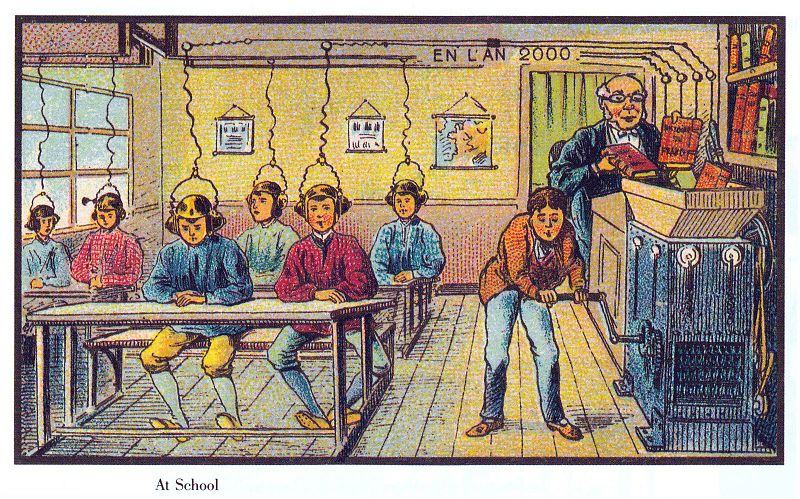
Particularly when it comes to helping students as well as families who are in deep poverty, RELATIONSHIPS are the key – not videos or adaptive technologies. All the students in my wife’s 3rd and 4th grade classroom are homeless. They are in deep poverty, and the iPads they each can use in the classroom can be used wonderfully for learning – but they are not the keys which directly unlock the chains of generational poverty. Relationships are the key. If you want to learn more about this, give a listen to the recent Miami Device reflection podcast we recorded last week. We probably should record an entire podcast on this topic of how important relationships are for learning, especially for children in deep poverty.
Projects like Nebraska Loves Public Schools (@NElovesPS) and Stories from Schools (@BkPkStories) are vital to tell this story of the importance of teacher relationships for learning. We need EVERY school to have “Student News” teams sharing images, videos, and audio podcasts showcasing student learning for local communities as well as the “global stage” of the Internet. This is a goal of the OklaEd Learning Showcase. As educators, we need to directly counter the (seemingly) attractive narrative that relationships don’t matter for student learning and technology is a panacea. That’s a false and destructive assertion, which unfortunately gets wrapped within compelling videos like this one by CGPgrey.
Conclusions
I’m fully supportive of an agenda to transform and improve classroom learning which includes the uses of technologies to help students “show what they know” with media. Having taught 4th and 5th grade STEM fulltime the past two years, and living life alongside my wife who teaches homeless 3rd and 4th graders every weekday, I’m acutely aware of the realities of classroom learning in 2015. We need a culture change in our home state of Oklahoma when it comes to educational funding and financial support of public education, and we need to more broadly counter the destructive narrative which belittles and undervalues the vital roles classroom teachers provide for students and families in our communities. Blended learning can be powerful and even “transformative.” Videos and adaptive technologies can play vital roles in these learning experiences. At the center of all transformative learning in schools, however, is an experienced, skilled, dedicated, and caring educator. Sadly, this video by CGPgrey ignores this reality.
Yes, students need access to powerful digital technologies for learning. They also, however, need opportunities to develop and maintain positive relationships of trust with caring adults at school. Videos and adaptive learning platforms can’t provide this, and even advanced AI won’t.
Students need caring teachers, and they deserve them, regardless of their socio-economic status or life context.
For more ideas and examples of how well-meaning “educational transformation” technology advocates sometimes make false claims, see my July 2013 post, “Getting it WRONG: The Economist on Educational Technology, Testing and School Reform.”
If you enjoyed this post and found it useful, subscribe to Wes’ free newsletter. Check out Wes’ video tutorial library, “Playing with Media.” Information about more ways to learn with Dr. Wesley Fryer are available on wesfryer.com/after.
On this day..
- Teaching About “Froot Loop Conspiracy Theories” and Web Literacy – 2021
- 10 Free Things I Am Thankful For x2 – 2015
- Consider Upgrading Your Home Cable Modem to DOCSIS 3.0 – 2014
- Hangin’ Out with Brad and Drew – 2013
- A Free iPad Alternative to BoardDocs For Meeting Agenda and File Sharing – 2013
- Creating a Customized URL Shortener with YOURLS – 2011
- Stay Connected and Stay Warm with the Media Muff – 2010
- Google OS Could Reduce IT Department Demands – 2010
- 7 Mac and iPhone Software Apps for which I’m thankful – 2009
- Read Facebook in Pirate English – 2009

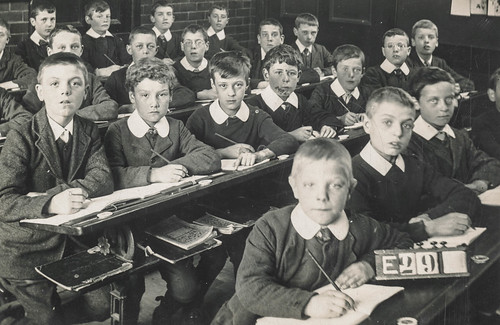

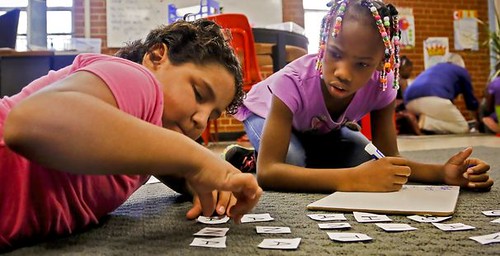
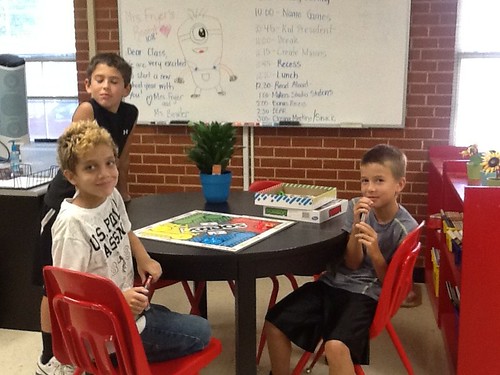
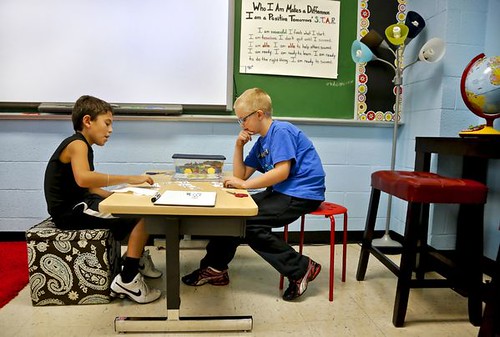
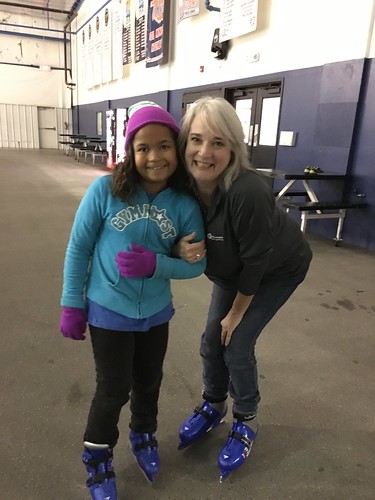
Comments
One response to “Students Need Teacher Relationships Not Just Adaptive Software & Videos”
This feedback via Twitter made my morning 🙂
https://twitter.com/mres/status/670166840426012672